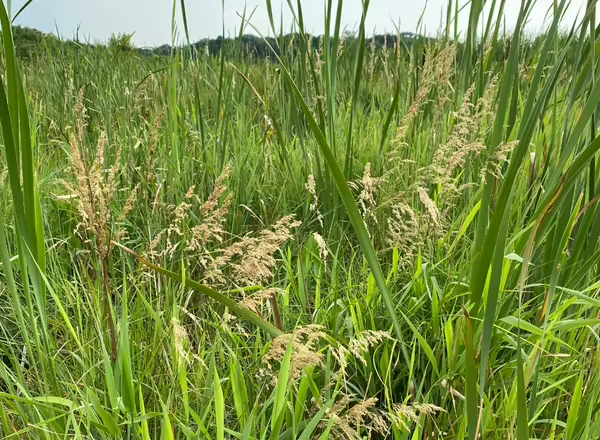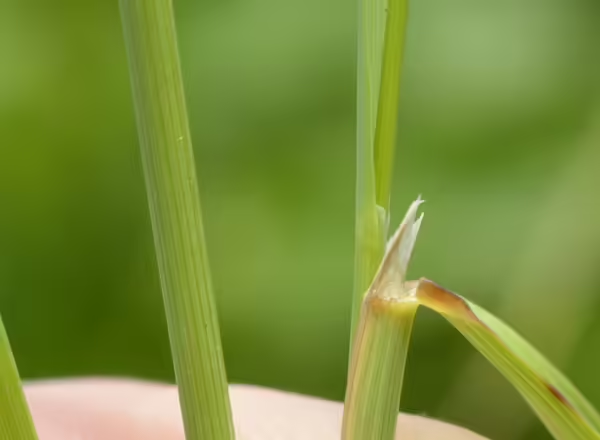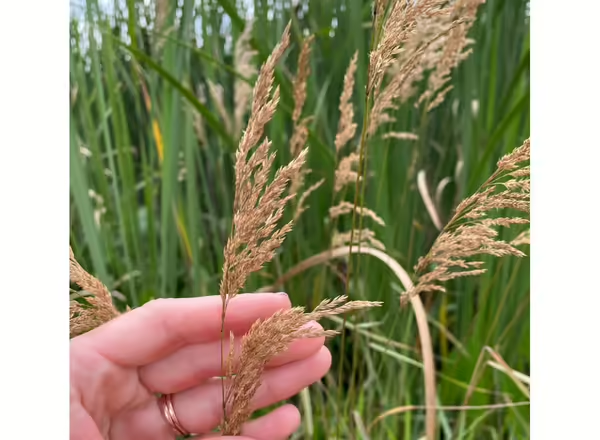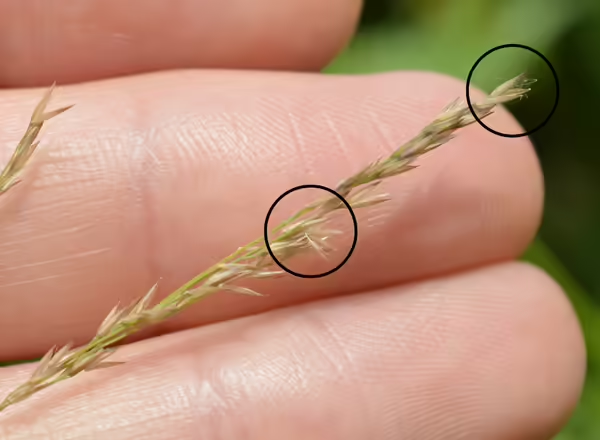Bluejoint Grass, Calamagrostis canadensis, is a native, cool-season grass that blooms in spring to early summer. It grows in marshes, swamps, and wet prairies. It spreads vegetatively through underground rhizomes, and so can form colonies in areas where it isn’t outcompeted.
Leaf characteristics
Bluejoint Grass grows about 4 feet tall, and its leaves have a blue-gray color to them. The leaves are rather floppy in comparison to other grasses that have stiff, thick leaves. A tall, membranous ligule can be found at the base of the leaf blade when you pull a leaf away from the stem.
Spikelet characteristics
When it flowers, this grass produces a narrow panicle inflorescence, which is a branched flower cluster. The spikelets (flowering units) of the grass can be green to pink, turning yellow-brown after blooming. If you look closely or use a hand lens, you should see a white tuft of hairs sticking out from the spikelets, which is a helpful identification characteristic. The branches of the panicle often droop to one side after blooming.
A useful grass for restoration efforts
While not necessarily recommended for planting in small spaces or a home garden, Bluejoint Grass is a great option for larger scale restoration efforts as a grass that can handle wet soil and establish into a stabilizing plant cover.
Need a refresher on grass identification terms, like ligule and spikelet? Check out this blog post!



